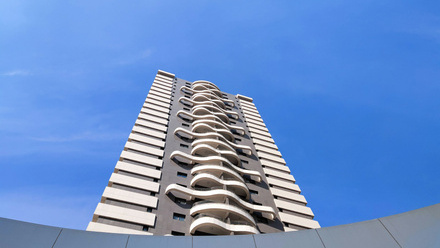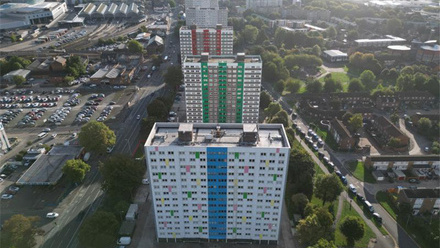Built environment and fire industries set out blueprint for improving competence and driving culture change
Setting the Bar is the second and final report of the Competence Steering Group (CSG) and is an update of its interim Report, Raising the Bar, published in August 2019. The work was initiated by the recommendations in Dame Judith Hackitt's review Building a Safer Future.
The proposed overarching system of competence set out in the report is made up of four key elements:
- a new competence committee sitting within the Building Safety Regulator
- a national suite of competence standards – including new sector-specific frameworks developed by 12 working groups
- arrangements for independent assessment and reassessment against the competence standards
- a mechanism to ensure that those assessing and certifying people against the standards have appropriate levels of oversight.
Since the publication of Setting the Bar, the CSG and its working groups have consulted widely and taken on board feedback as they have continued to develop sector frameworks and overarching competence frameworks. These frameworks will provide the skills, knowledge, experience and behaviours needed to carry out specific roles, and deliver a more rigorous approach to the essential training and assessment that is required.
Additionally, the competence requirements for the new role of Building Safety Manager have also been completed – which has been a major element of the CSG's work. Setting the Bar includes a summary of the key points under the Working Group 8 section, but there is a full and separate report published by WG8 alongside this report, Safer people, safer homes: Building Safety Management, reflecting the fact that WG8 is establishing a completely new role and the competence needed.
The CSG is recommending that all individuals whose work on higher-risk buildings is likely to materially affect safety outcomes, or who work unsupervised on these buildings, should meet the skills, knowledge, experience and behaviours set out in the competence frameworks developed by the industry.
Francesca Berriman MBE, Chief Executive, CIAT, said: "CIAT as a lead professional body within the built environment, with its specialism focusing on the performance and function of buildings, is committed to ensuring that its members form part of the key team so that buildings are built to exacting standards that are safe for people to live, sleep and work.
"The tragedy of Grenfell has led to the Building Safety Bill and what will be the mandatory competences and new statutory building safety regime, which will be transformational in how we deliver those buildings that will fall within the scope of the Bill once enacted. This is absolutely essential and one we strongly support to ensure that we do not witness such a terrible event again in the future.
"Architectural Technology and our members are critical in achieving this and as such we have been proactive in the broad stream of work led by Dame Judith Hackitt and the Ministry of Housing Communities and Local Government (MHCLG) in ensuring life safety. This has also included the work established by the Competency Steering Group (CSG), where we are represented on many of the working groups as detailed in this Report. This Report has been the foundation for much of the work which is now being developed.
"In tandem with the work we are involved with alongside MHCLG, CSG and the Construction Industry Council (CIC), CIAT is in the process of reviewing its membership structures to prepare itself for the new regime to be established under the Building Safety Bill, and the need to have accreditation schemes for the Duty Holders as they affect our members. These will include the Principal Designer and Building Safety Manager. There will also be a scheme for Designers who will work on those buildings which fall within scope (HRRB) set by the Bill once it is enacted.
"Over the coming months we will be reporting on this in more detail so we can support our members in preparing themselves in readiness for the new regime."
CSG Chair, Graham Watts, Chief Executive of the Construction Industry Council (CIC) said: "We would see higher-risk buildings as an essential starting point for the new competence frameworks for the whole of the built environment, which would result in a step change across the sector and change of industry culture."
The CSG has worked closely with the Ministry of Housing Communities and Local Government and some of the Report's key recommendations have already been adopted, including the proposal for a Commitee on Industry Competence as set out in the draft Building Safety Bill.
The CSG is urging government to make mandatory the assessments against the frameworks for those working on higher-risk buildings, and is calling on the government to take the lead by requiring that the competence framework set out within this report (subject to their review against the Overarching Competence Framework Standard currently being developed through BSI) must be met by any company or individual working on any higher-risk building.
Watts said: "There is no time to lose in casting aside the substandard practices that have shamed the industry. In this document we have set a new bar and we would urge all those working in life-critical disciplines to attain these higher levels of competence. Only then can we rebuild the trust of those who occupy and live in the buildings we design, construct and manage."
Anthony Taylor, Chair of WG8, Director, H&S for Avison Young, said: "Developing the completely new role of Building Safety Manager has been an enormous undertaking, which we have worked closely with MHCLG to achieve. We believe the competences and job functions we have set out will deliver the reassurance and trust to residents that their buildings are being managed safely by landlords."
The Full Report Setting the Bar and accompanying Annexes can be downloaded here.
The Executive Summary is available here.
WG8 Report Safer people, safer homes: Building Safety Management is available here.





